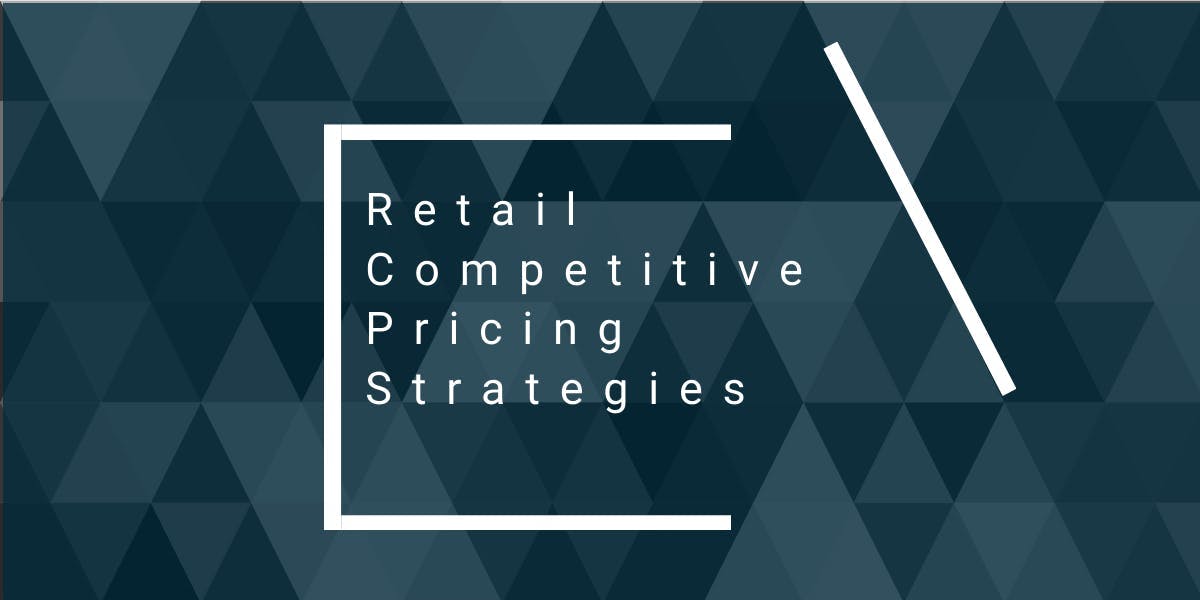Retail Competitive Pricing Strategies
Flipnode on May 25 2023

Setting the right pricing strategy is a critical determinant of a business's success. The price of a product is typically one of the primary considerations for buyers, making it crucial for businesses to carefully consider their pricing approach. Failing to establish an effective strategy can lead to lost profits and declining sales. Thus, the significance of getting the pricing right cannot be underestimated.
What is competitive pricing?
Competitive pricing can be seen as a delicate balance between maximizing profits and providing appealing products to consumers. It involves carefully evaluating and comparing competitors' prices. Striking the right balance is crucial for businesses that offer everyday products. This is particularly important for firms selling common goods that have minimal differentiation across companies.
The main takeaway from this article is to recognize the relevance of identifying the appropriate competitive pricing strategy for your business.
Factors that affect retail pricing
Retail competitive pricing can be broadly divided into two categories: internal factors and external factors. In this article, we will focus on the internal factors that originate from within the organization itself. These factors play a significant role in determining the pricing strategy. Let's explore some key
Internal factors:
- Organizational factors:
At the top-level, management plays a pivotal role in defining the overall price range and establishing pricing policies. Their decisions and strategic direction have a direct impact on the pricing strategy adopted by the organization.
On the operational level, lower-level staff members are responsible for setting specific prices for products or services. They consider various factors such as market trends, competition, and internal cost structures to determine the most appropriate pricing for each offering. - Marketing mix:
The marketing mix comprises the seven P's: product, place, promotion, price, process, people, and physical evidence. While all elements are essential, price holds significant importance in attracting and retaining customers. Organizations need to carefully evaluate the price component of their marketing mix to ensure it aligns with their target market, positioning, and value proposition. - Product differentiation:
In highly competitive markets where truly unique products are rare, product differentiation becomes crucial. Organizations need to identify and highlight factors that set their offerings apart from competitors. This could include aspects such as superior quality, unique features, innovative design, or exceptional customer service. Through effective product differentiation, businesses can justify higher prices and create a competitive advantage. - Product cost:
Determining the price of a product or service requires a thorough understanding of its cost structure. This includes considering factors like raw materials, labor wages, manufacturing or production expenses, marketing and promotional costs, and other associated overheads. Setting a price below the combined cost may lead to financial losses for the business. Therefore, organizations need to carefully analyze and calculate the true cost of their products or services to establish viable pricing strategies.
By considering and effectively managing these internal factors, businesses can develop competitive pricing strategies that align with their goals, market positioning, and customer expectations. It is crucial to strike a balance between profitability and customer value to ensure long-term success in the retail industry.
External factors:
External factors play a significant role in shaping pricing decisions, even though they are beyond the direct control of a company. These factors are industry-wide and relevant to firms across the board. While they may lie outside the scope of a single company, they can be predicted and accounted for through careful planning and market analysis. Let's explore the primary external factors that influence pricing:
- Demand:
Demand can be categorized as either inelastic or elastic. Inelastic products or services, characterized by stable demand, can sustain higher prices without significant fluctuations. Conversely, elastic products experience rapid shifts in demand and require more flexible pricing strategies to remain competitive. - Competition:
The competitive landscape of a market plays a crucial role in pricing. In a monopolistic market, there may be room for higher prices, whereas in a competitive market, pricing too high can lead to the failure of a company's strategy. Thorough competitive research is necessary to understand market dynamics and set appropriate pricing levels. - Supplies:
The availability of supplies directly impacts pricing. When raw materials are scarce, particularly in combination with high demand, prices can rise significantly while remaining within profitable bounds. Conversely, products based on abundant materials may face pricing pressures in competitive markets unless they offer unique value propositions.
It is essential to grasp these fundamental concepts to predict and develop effective pricing strategies while avoiding detrimental losses. However, it is important to note that while external and internal factors are universally important, their specific considerations should be tailored on a case-by-case basis.
By understanding and appropriately addressing both internal and external factors, businesses can develop pricing strategies that optimize profitability, respond to market conditions, and meet customer demands effectively.
What are the types of retail competitive pricing?
Choosing the appropriate type of retail competitive pricing requires careful consideration of your specific requirements and goals. In today's globalized and highly competitive market, understanding the different pricing strategies becomes even more crucial. Let's examine three primary types of retail competitive pricing:
- Cost plus pricing strategy:
This is the simplest approach, where a fixed profit margin (markup) is added to the cost of the product, resulting in the selling price. While this strategy may seem straightforward, it is generally considered suboptimal as it lacks in-depth pricing research. Relying solely on cost plus pricing is unlikely to provide a competitive advantage, as it is based on limited data or information. Therefore, this strategy should only be considered as a last resort. - Demand pricing strategy:
In this approach, the price is directly influenced by demand. The goal is to maximize sales during peak demand periods, where prices and, sometimes, volumes can be higher. An example of this strategy is seen in concert or festival tickets, where prices increase as the event approaches to capitalize on the high demand and maximize profits. - Penetration pricing strategy:
With a penetration pricing strategy, a market is entered by offering products at a lower price compared to the competition. The primary objective is to generate demand and establish a foothold in the market. Temporary losses during the market entry phase are expected. Once a significant market share is gained and brand recognition is established, a more profit-focused pricing strategy can be implemented.
It is important to carefully assess your business goals and market dynamics to determine the most suitable pricing strategy. Consider factors such as competition, customer demand, and long-term profitability when making your decision. Each strategy has its own advantages and trade-offs, and selecting the right one can greatly influence your success in the market.
Benefits of competitive pricing strategies
Competitive pricing has been thoroughly explored, encompassing its key factors and types. However, it is essential to examine the concrete advantages of implementing an efficient competitive pricing strategy. While increased profitability is undoubtedly a major benefit, there are other equally important advantages to consider:
- Market loss prevention:
A well-executed competitive pricing strategy allows businesses to adapt to changing market conditions. By closely monitoring competitors and adjusting prices accordingly, companies can minimize market losses. This approach not only helps retain customers but also enables the preservation of market shares. - Improving profit margins:
As mentioned earlier, a carefully crafted pricing strategy can effectively maximize profits. However, achieving this optimization requires considering various factors such as elasticity, level of competition, current market shares, and product uniqueness. While the concept of improving profits through competitive pricing strategies is straightforward, implementing the most suitable strategy can be complex. - Ability to have dynamic pricing:
Dynamic pricing stands in contrast to a cost plus pricing strategy. It involves implementing sophisticated, constantly monitored, and adaptive pricing strategies to gain a competitive advantage and maximize profits. Employing tools to track and analyze millions of price changes that occur daily is highly encouraged in order to effectively implement dynamic pricing. - Efficiency:
Efficiency, in the context of pricing, refers to the combination of an effective pricing strategy with other strategies that yield multiple benefits. This includes streamlining and automating pricing processes, as well as incrementally improving customer retention. Enhancing efficiency is crucial for a successful retail competitive pricing strategy.
By leveraging these advantages, businesses can enhance their competitiveness, attract customers, and increase profitability. It is important to recognize that implementing a competitive pricing strategy requires careful analysis of the market dynamics and consideration of various influencing factors.
Conclusion
In the data-centric landscape of e-commerce decision-making, accessing publicly available data has become a fundamental approach to obtaining valuable insights that would otherwise be inaccessible. Leveraging such data can greatly assist in determining the optimal pricing strategy for your business.



